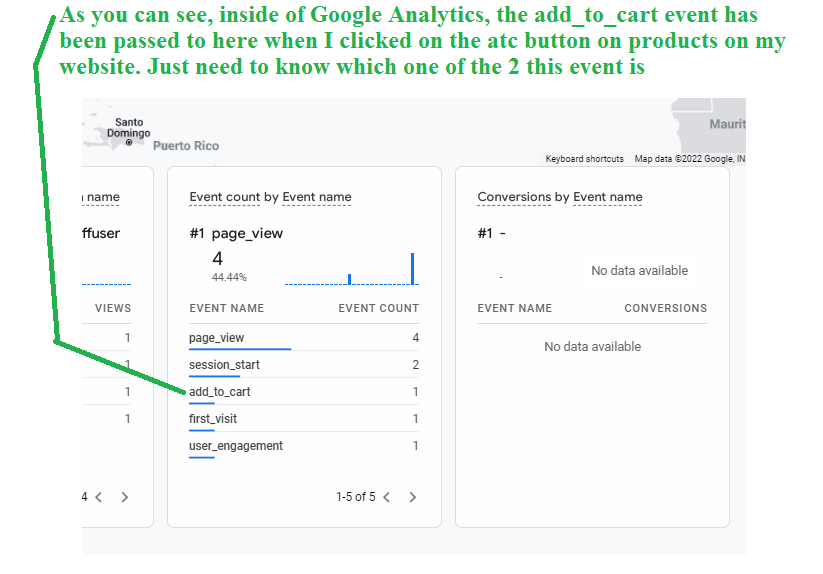Maximize Your ROI With Remarketing in Google Analytics
In the realm of digital marketing, the application of remarketing techniques within Google Analytics has actually proven to be a powerful tool for improving roi. By harnessing the power of user information and tailoring advertisements to particular audience segments, services can significantly amplify their conversion rates. The genuine vital lies in the art of accuracy - comprehending user behavior, crafting compelling ads, and continually refining approaches to drive ideal outcomes. The trip to optimizing ROI through remarketing is a nuanced path paved with understandings and opportunities that can improve the trajectory of your marketing endeavors.
Understanding Remarketing in Google Analytics
Understanding remarketing in Google Analytics is essential for optimizing your digital marketing method. Remarketing enables you to target users that have previously visited your website or communicated with your application, presenting them with tailored ads as they surf various other sites or utilize various other apps within the Google Display Network. This technique helps maintain your brand name top of mind and urges customers to return to your website, eventually boosting the chance of conversion.
By utilizing Google Analytics, you can track the efficiency of your remarketing projects, gaining useful understandings right into individual habits, interaction, and conversions. This data enables you to fine-tune your targeting, bidding, and messaging strategies to improve the overall performance of your projects.
In addition, comprehending the various sorts of remarketing checklists readily available in Google Analytics, such as typical, dynamic, and similar target markets, permits you to produce tailored and extremely segmented campaigns tailored to specific customer segments. This degree of granularity can considerably enhance the relevance and influence of your remarketing efforts, inevitably maximizing your roi.
Establishing Remarketing Lists
To efficiently apply remarketing projects in Google Analytics, the preliminary action includes producing and setting up remarketing checklists targeting particular user sectors based upon their communications with your website or application. By establishing remarketing listings, you can customize your marketing efforts to get to customers who have actually already revealed rate of interest in your service or products.
To start, navigate to the Admin area of your Google Analytics account and choose the Property where you wish to develop the remarketing checklist. After that, under the Residential or commercial property column, click on 'Audience Definitions' and choose 'Audiences.' Next off, click the red 'New Audience' button and select 'Develop New' to define the criteria for your remarketing checklist.

Crafting Reliable Remarketing Ads

When crafting your advertisements, focus on producing attention-grabbing headlines and compelling visuals that attract attention to possible consumers. Include solid calls-to-action that urge customers to revisit your site and finish a preferred action. Utilize dynamic remarketing to show personalized ads including products or solutions that customers have previously viewed on your website.
Additionally, make sure that your advertisements are mobile-friendly given that a significant part of internet traffic originates from smart phones. Examination different advertisement variations to determine which layouts and messages drive the most effective results. By constantly refining and enhancing your remarketing ads based on efficiency information, you can maximize their performance and improve your roi.
Analyzing Remarketing Performance

Via Google Analytics, marketers can track the performance of their remarketing campaigns in real-time, permitting them to identify patterns, patterns, and locations for improvement without delay. By evaluating the data, online marketers can establish which advertisements are executing well, which target market segments are reacting positively, and which channels are driving one of the most conversions. This degree of granularity enables marketing professionals to make data-driven decisions to optimize their remarketing projects for far better outcomes.
Maximizing ROI With Remarketing
Analyzing remarketing information in Google Analytics makes it possible for my sources marketing professionals to pinpoint opportunities for maximizing roi (ROI) with critical changes - What Is “Remarketing” In Google Analytics?. To make best use of ROI with remarketing, it is crucial to understand the actions of your target market. By assessing customer interactions, such as the web pages they went to, the products they watched, or the actions they took on your website, you can tailor your remarketing campaigns better
Segmenting your target market based upon their habits enables you to produce customized and targeted ads that are more probable to resonate with them. By showing pertinent advertisements to details sectors of your target market, you can enhance the chances of conversion and eventually enhance your ROI.
Moreover, checking various ad creatives, messaging, and deals can help determine what reverberates finest with your target market. A/B testing allows you to explore different components of your ads to establish what drives the highest interaction and conversion prices.
Final Thought
To conclude, making best use of ROI with remarketing in Google Analytics requires a calculated approach to analyzing user actions, segmenting audiences, developing tailored advertisements, and maximizing project efficiency. By leveraging data-driven insights and examining various strategies, services can improve their remarketing efforts to drive greater interaction and conversion prices. This systematic method guarantees that resources are efficiently allocated in the direction of optimizing rois in remarketing projects.
Next off, click on the red 'New Audience' switch and pick 'Develop New' to specify the specifications for your remarketing list.
By constantly refining and optimizing your remarketing ads based on performance information, you can maximize their effectiveness and improve your return on investment.
By diving right into these insights, marketing experts can get a thorough understanding of exactly how their remarketing initiatives are resonating with their target audience and driving conversions. To make best use of ROI with remarketing, it is critical to recognize the actions of your target market.In conclusion, making best use of ROI with remarketing in Google Analytics calls for a critical approach to evaluating individual actions, segmenting target markets, producing tailored advertisements, and optimizing project efficiency.